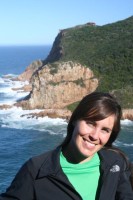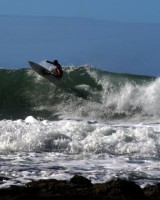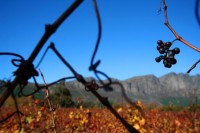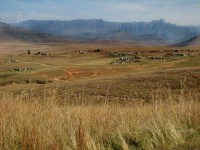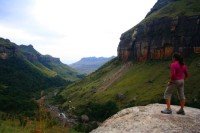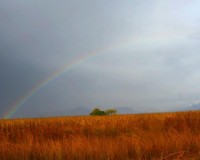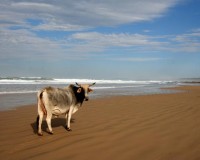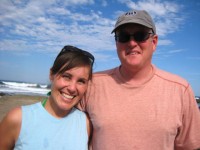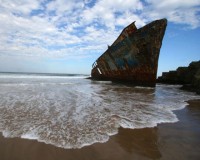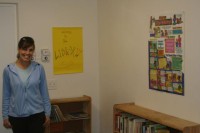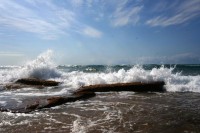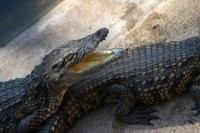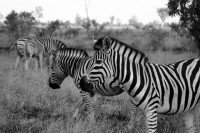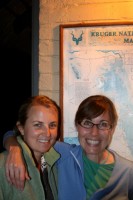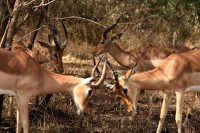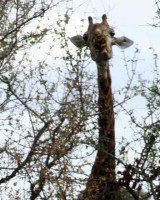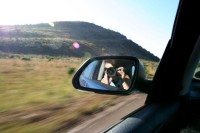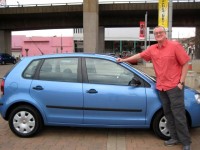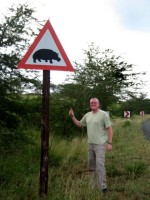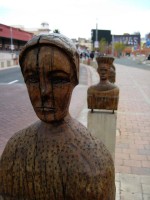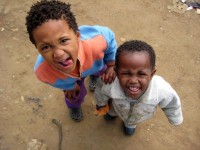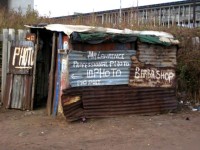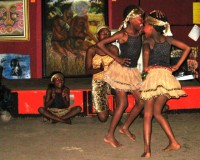Sat 14 Jun 2008
The Greatest Cape
Posted by Shanna under South Africa
[2] Comments
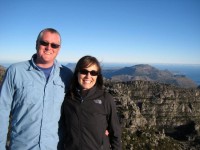
As we drove through South Africa, we met a lot of locals who were eager to hear which parts of their country we’d seen already and which ones we were planning to visit next. Upon hearing our schedule, a lot of them said something along the lines of, “Just wait until you get to Cape Town. You’ll love it.” How right they were.
I loved our time in Cape Town so much that I’m afraid I’ve become a bit evangelical about the place. (If you know me personally (or maybe even if you don’t), be prepared for me to try to convince you to go there as soon as you possibly can.) Why I am such a fan of Cape Town? This short list just scrapes the surface:
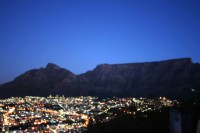
(1) Its natural wonders are both incredible and incredibly close by. Table Mountain is right in the middle of town, more or less. It serves as both a beautiful addition to the skyline and a fantastic vantage point from which to look out over the city. We rode a cable car to the top of the mountain and spent a happy couple of hours wandering along its well-maintained trails and trying to wrap our minds around the fact that the mountaintop is completely flat. Afterwards, we headed over to Signal Hill to watch the sun setting over the Atlantic Ocean and the city lights slowing turning on. Gorgeous.
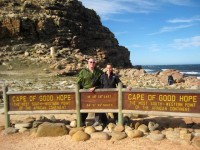
Speaking of gorgeous, less than an hour outside of Cape Town lies the Cape of Good Hope Nature Reserve. We took a very, very windy hike along the rocks above the park’s spectacular coastline and ended up at the Cape of Good Hope itself. Although it’s often given credit as such, the Cape of Good Hope isn’t the southernmost part of Africa (that honor goes to Cape Agulhas, a little bit to the east). The Cape of Good Hope is, however, the southwesternmost point. That phrase may not look as good on a t-shirt, but it’s something…
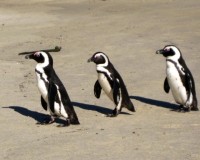
On the way to the nature reserve, we stopped at Boulders Beach, which is famous for being home to a colony of 3000 penguins. These penguins were formerly called “jackass penguins,” which is not a reflection on their character, but rather on the donkey-like noise they make. They’ve recently been upgraded to a new name and are now simply called “African penguins.” The walkways along the beach allowed us great views of the penguins, who seemed to be very used to the presence of humans. (We even had the opportunity to swim with the little cuties. Seeing as how it was about 55 degrees, however, we passed.)
(2) It’s an incredibly cosmopolitan city. As such, it has all the gourmet food, excellent shopping and, err, dirty martinis anyone could ever want.
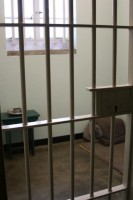
(3) Its tragic history has been shaped into lessons for future generations. While in Cape Town, we visited Robben Island, home of the prison in which Nelson Mandela spent 18 of his 27 years of imprisonment. (The entire island is now a museum.) Our bus tour–sadly, there’s really no other way to see the island–took us past the lime quarry where Mandela and other prisoners slaved in the heat. We were then led through the prison and to Mandela’s cell by, amazingly enough, a man who was incarcerated on the island for 7 years because of his work with the African National Congress. Our guide had some amazing stories to tell about his time on the island, and he seemed remarkably able to talk about his experiences without getting angry.
We also stopped in at the District Six Museum, a moving museum about a once-vibrant, diverse neighborhood that was bulldozed during apartheid in an attempt to turn the district into an all-white area. Some 50,000 people were forcibly relocated to what were essentially slums. Many of the people who were evicted from their homes have returned to the museum to mark on a map the location of their former houses and nearby landmarks. Since democracy arrived in South Africa, the government has prioritized the rebuilding of District Six and the return of its land to its former residents, but its progress has been slow.
(4) It’s–finally!–diverse. We have been shocked at how racially divided South Africa is. We were happy to see that, in Cape Town, people of all races seem to mix more easily. It was a really nice change.
If those reasons aren’t enough to convince you to make the trip, I’ve got plenty more…
[embedplusvideo height=”350″ width=”450″ editlink=”http://bit.ly/1r6iJu5″ standard=”http://www.youtube.com/v/PxFAyDolZCU?fs=1″ vars=”ytid=PxFAyDolZCU&width=450&height=350&start=&stop=&rs=w&hd=0&autoplay=0&react=1&chapters=¬es=” id=”ep5895″ /]
[embedplusvideo height=”350″ width=”450″ editlink=”http://bit.ly/1r6iQWD” standard=”http://www.youtube.com/v/MyBXHE2xRFA?fs=1″ vars=”ytid=MyBXHE2xRFA&width=450&height=350&start=&stop=&rs=w&hd=0&autoplay=0&react=1&chapters=¬es=” id=”ep7553″ /]
